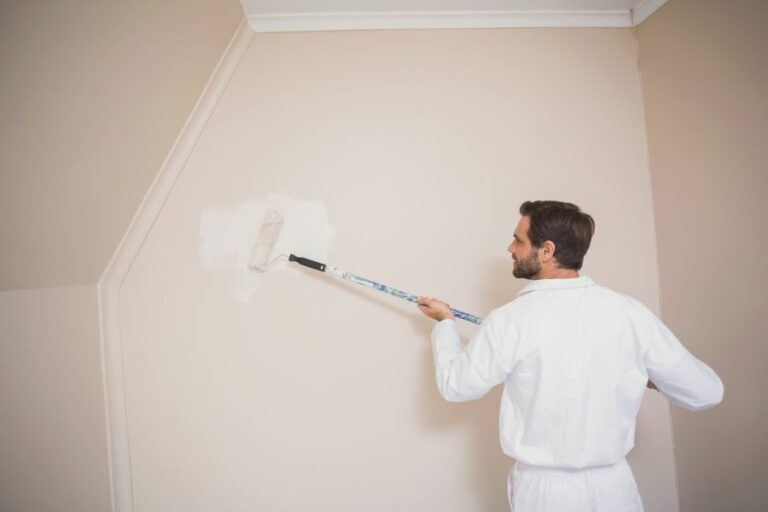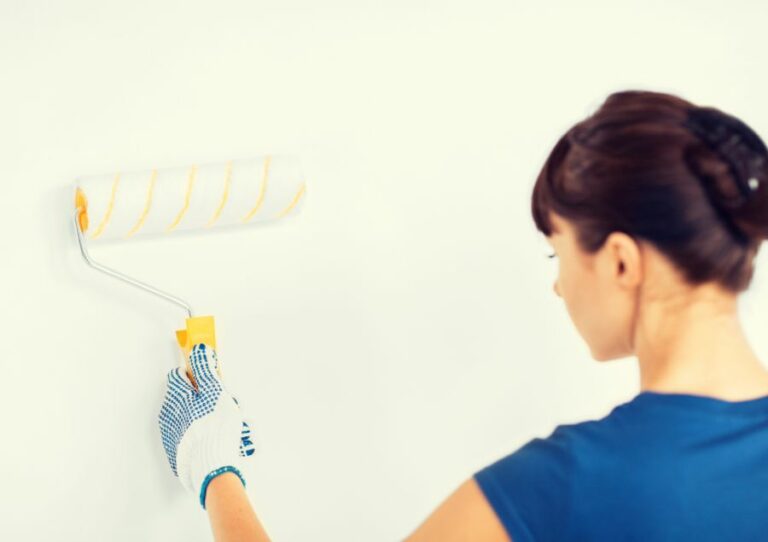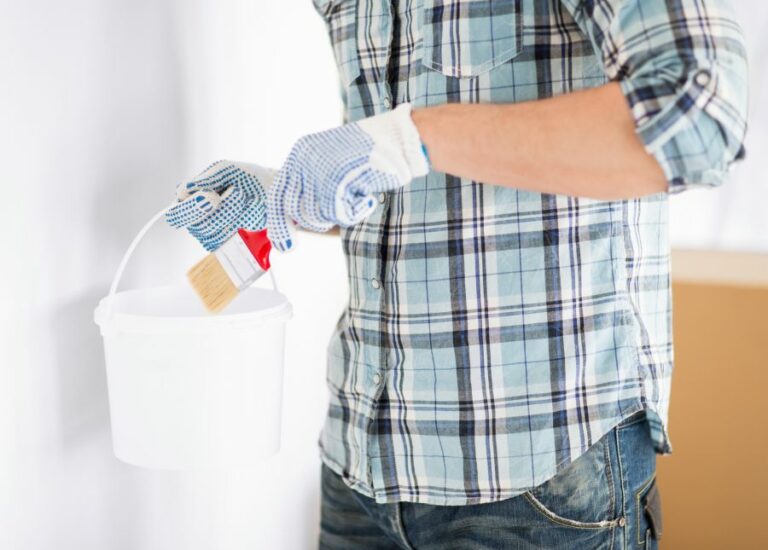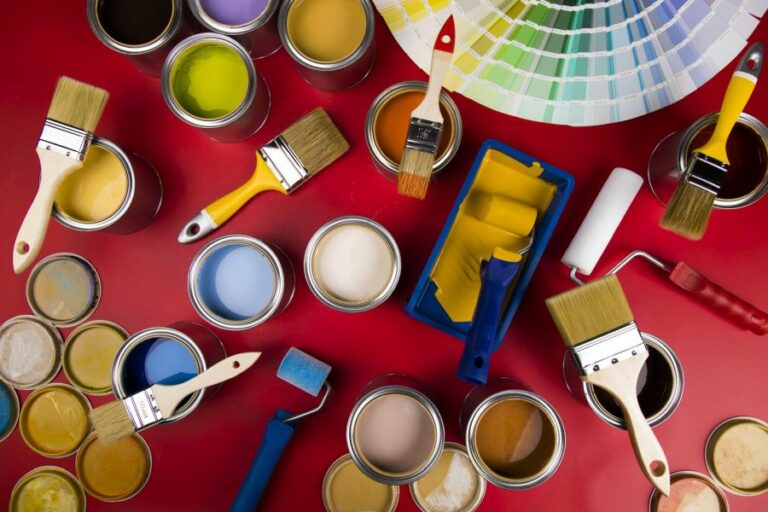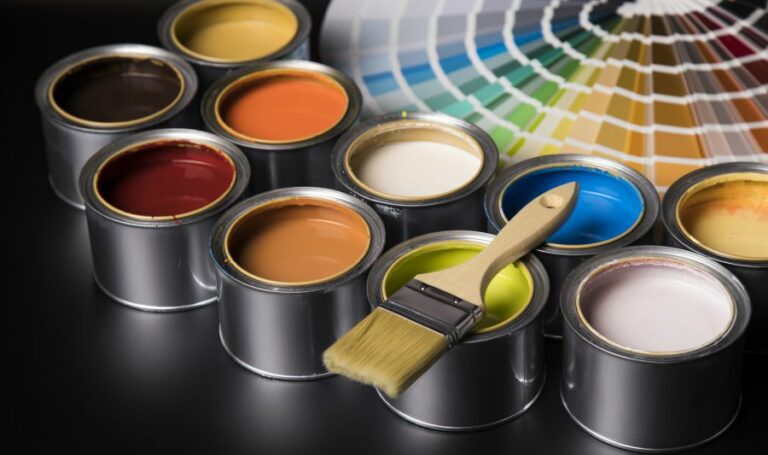Choosing A Finish For Indoor Paint, 25 Things You Should Know
Choosing the right paint finish can make all the difference in achieving the desired look and feel when it comes to sprucing up your interior walls. As experienced professionals, we understand that it can be daunting to select the perfect finish, given the plentiful options available nowadays.
Choosing a finish for indoor paint:
When choosing a finish for indoor paint, consider the room’s purpose, durability, and aesthetic appeal. Matte finishes are best for concealing imperfections in low-traffic areas, while eggshell provides durability in moderate-traffic spaces. Satin and semi-gloss finishes are ideal for high-traffic areas due to their resistance to dirt, stains, and scuffs. High-gloss finishes offer the highest level of durability and are suitable for surfaces requiring frequent cleaning.

Eager to give your space a makeover with a fresh coat of paint? Discover the perfect finish for your indoor oasis as we unpack everything from matte to a high gloss. There’s more to share, so keep reading and transform your home today!
Contents
- 1 Selecting the Perfect Indoor Paint Finish
- 2 Deciding on the Ideal Interior Paint Finish
- 3 Trending Paint Finishes for Interior Walls
- 4 Flat vs. Satin: Which is Best for Interior Walls?
- 5 Choosing the Ultimate Living Room Paint Finish
Selecting the Perfect Indoor Paint Finish
• Understanding Paint Finishes
Before diving into the factors to consider when choosing a finish for indoor paint, it’s essential to understand the different types of paint finishes available. Generally, paint finishes are categorized into the following types:
– Matte
Matte finish, also known as a flat finish, offers a non-reflective surface, making it ideal for concealing imperfections on walls and ceilings. Matte finish is perfect for low-traffic areas like bedrooms or formal living rooms.
– Eggshell
Offering a slight sheen, the eggshell finish is more durable than matte, making it an excellent choice for moderate-traffic spaces like hallways, living rooms, and bedrooms.
– Satin
Satin finish provides a silky, smooth, and slightly glossy appearance, making it ideal for high-traffic areas like kitchens, bathrooms, and kids’ rooms. It is more resistant to dirt, stains, and scuffs than eggshell and matte finishes.
– Semi-Gloss
Semi-gloss finish, as the name suggests, is a bit shinier than satin and is perfect for spaces that require easy maintenance and cleaning, like kitchens and bathrooms. It is also ideal for doors, windows, and trims.
– High-Gloss
The high-gloss finish has a mirror-like sheen and offers the highest level of durability and resistance to stains and wear. It is typically used for surfaces like doors, trims, and cabinets, requiring frequent cleaning.
• Factors to Consider When Choosing a Paint Finish
With a clear understanding of the different paint finishes, let’s look at the factors to consider when selecting a finish for indoor paint.
– Durability and Maintenance
The durability of a paint finish is directly related to its sheen. Glossy finishes like semi-gloss and high-gloss offer more resistance to stains, scuffs, and wear than matte and eggshell finishes.
When choosing a paint finish for high-traffic areas, it is wise to opt for a satin or semi-gloss finish for easy maintenance and cleaning.
– Room and Surface Types
The purpose and nature of a room play a crucial role in selecting the paint finish. For instance, a finish suitable for a kitchen might not have the same appeal in a bedroom. Here’s a quick room-specific guide:
- Living Rooms: Eggshell or satin finish
- Bedrooms: Matte or eggshell finish
- Kitchens and Bathrooms: Satin, semi-gloss, or high-gloss finish
- Hallways and Corridors: Eggshell or satin finish
- Doors, Trims, and Cabinets: Semi-gloss or high-gloss finish
– Aesthetic Appeal
When it comes to the visual aspects of a paint finish, consider the following points:
- Light Reflection: Glossy surfaces reflect light, making a room appear brighter and more spacious. Matte finishes, on the other hand, can make a room feel cozy and intimate.
- Concealing Imperfections: Matte and eggshell finishes absorb light and can mask wall imperfections. Glossier finishes might highlight those defects due to their reflective properties.
– Environmental Impact
Today, many paint manufacturers offer environmentally-friendly paint options with low-VOC (Volatile Organic Compounds) or zero-VOC certifications. This information can be found on the paint can’s label or on the manufacturer’s website.
Choose a paint finish that is low-VOC or zero-VOC to reduce the impact on the environment and indoor air quality.
• Tips for Choosing the Right Finish
Based on the factors mentioned above, here are some practical tips to help you choose the perfect paint finish for your space:
- Always start with the room’s purpose and the desired aesthetic. Consider which finish will work best for the area’s functionality, such as resistance to moisture and cleanability.
- Test small samples of different finishes on your wall to see how they look against your room’s lighting and furniture.
- Consult with experts at your local paint store or a professional painter to ensure you’re making the best decision for your space.
- Never assume that a specific finish is suitable for all areas of a room. Mix and match the finishes to achieve the desired balance of durability and style, like using semi-gloss for trims and matte for walls.
In conclusion, selecting the right paint finish for your space is an essential aspect of creating your desired ambiance and aesthetic. With a thorough understanding of paint finishes and factors to consider, you’ll be well-equipped to choose the perfect finish for your indoor paint project.
Deciding on the Ideal Interior Paint Finish
Selecting the ideal paint finish for your home’s interior is an important decision. Not only can it have a significant impact on the overall aesthetic, but it can also affect durability, maintenance, and even the perceived size of a space.
• Understanding Different Types of Paint Finishes
Before diving into how to choose the best paint finish for your project, it’s important to understand the different types and their characteristics.
– Flat/Matte
Flat or matte finishes provide a velvety, non-reflective surface. They’re excellent for hiding minor imperfections in the wall and provide rich, deep color. Flat finishes are best suited for low-traffic areas, as they can be challenging to clean without leaving marks.
– Eggshell
Eggshell finishes have a slight sheen, similar to the shell of an egg. They’re more durable than flat finishes and are easier to clean. Eggshell finishes are a popular choice for living rooms, dining rooms, and bedrooms, as they strike a balance between durability and subtle gloss.
– Satin
With a smooth, silky look, satin finishes are ideal for high-traffic areas where a little extra durability is necessary. They’re resistant to mildew and are easier to clean than eggshell or flat finishes. Satin finishes work well in spaces such as kitchens, bathrooms, and hallways.
– Semi-Gloss
Semi-gloss finishes have a noticeably glossy appearance and are highly durable. They’re easy to clean, making them a perfect choice for areas prone to moisture, like kitchens and bathrooms. Semi-gloss can also be used for trim and woodwork, providing a subtle contrast to walls with less shine.
– High-Gloss
As the name suggests, high-gloss finishes provide a high level of shine and reflectivity. They’re extremely durable and easy to clean, making them suitable for high-traffic areas or surfaces that require frequent cleaning.
However, because of their reflective nature, high-gloss finishes can highlight any imperfections on the surface.
• Factors to Consider When Choosing a Paint Finish
Now that you understand the differences between various paint finishes, consider the following factors to help you make the best decision for your home.
– Durability and Cleaning
Higher sheen finishes, such as satin, semi-gloss, and high-gloss, are more durable and easier to clean than their matte counterparts. If your space is prone to dirt, moisture, or frequent use, opt for a finish with a higher sheen for better longevity and simple maintenance.
– Room Function
When selecting a paint finish, consider the purpose and atmosphere of the room. Matte finishes work well in low-traffic spaces like bedrooms, where a cozy, relaxing vibe is desired. On the other hand, kitchens and bathrooms often require more durable, moisture-resistant finishes.
– Surface Imperfections
If your walls have minor imperfections or bumps, a flat or matte finish can help hide these issues. Glossier finishes, such as semi-gloss or high-gloss, are more likely to highlight imperfections due to their reflective nature.
– Lighting
The lighting in your space can also impact the appearance of your paint finish. Matte and eggshell finishes tend to absorb light, creating a softer, more diffused look. Whereas, glossy finishes reflect more light, which can brighten a space or highlight specific features.
• Personal Recommendations
Based on my experience, I recommend using a combination of finishes throughout your home based on the factors mentioned above. Here are my specific suggestions:
- Bedrooms and living rooms: opt for eggshell finishes for a balance between a subtle sheen and easy cleaning.
- Kitchens and bathrooms: satin or semi-gloss finishes are ideal for moisture resistance and durability.
- Ceilings: flat finishes help minimize glare and hide imperfections.
- Trim and woodwork: semi-gloss finishes provide a subtle contrast and are easy to clean.
By considering these factors and recommendations, you’ll be well-equipped to choose the perfect paint finish for the interior of your home. For further guidance on selecting paint finishes and other painting tips, visit the Environmental Protection Agency’s guide on renovating and painting.
Paint Finish | Description | Best Suitable For |
|---|---|---|
Flat/Matte | No shine, hides wall imperfections very well | Low-traffic areas like bedrooms and ceilings |
Eggshell | Low sheen, slightly more durable than flat/matte | Living rooms, bedrooms and dining rooms |
Satin | Soft sheen, easy to clean, slightly reflective | Hallways, family rooms, children’s rooms and entryways |
Semi-Gloss | Shiny, durable and easy to clean | Doors, windows, trim and kitchen cabinets |
Gloss | High shine, very durable and easy to clean | Doors, trim, cabinets and furniture |
Trending Paint Finishes for Interior Walls
• An Overview of Paint Finishes
Before diving into the most popular paint finish for interior walls, it’s essential to understand the various types of finishes available in the market. Paint finishes range from flat or matte to high gloss, each with its distinct properties and ideal applications.
– Flat or Matte
Flat, also known as matte, is a non-reflective paint finish that provides a smooth, even appearance. This finish is ideal for use on ceilings and walls in low-traffic areas, such as bedrooms and living rooms.
– Eggshell
Eggshell has a slight sheen, similar to that of an eggshell, which adds a touch of luster to walls. This finish is more washable and durable than a flat finish, making it suitable for use in common areas such as corridors, dining rooms, and kids’ rooms.
– Satin
Satin has a soft, subtle shine that can be compared to that of silk. This finish is ideal for high-traffic areas due to its excellent durability and moisture resistance, making it perfect for bathrooms, kitchens, and laundry rooms.
– Semi-Gloss
Semi-gloss paint finishes feature a moderate sheen that reflects light, creating a visually appealing appearance. This finish is highly durable, moisture resistant, and easy to clean, making it ideal for use in high-moisture areas, such as bathrooms and kitchens.
– High Gloss
High gloss paints possess the highest level of sheen, providing a sleek, mirror-like appearance. This finish, although less commonly used on interior walls, is known for its durability, ease of cleaning, and water resistance. It is typically used for doors, trim, and cabinetry.
• The Most Popular Paint Finish for Interior Walls: Eggshell
Eggshell finish, with its subtle sheen and unique balance of attributes, has earned its place as the most popular paint finish for interior walls.
– Balancing Durability and Aesthetics
A crucial factor contributing to the popularity of eggshell finish is its balance between durability and aesthetics. This finish manages to provide a delicate sheen while maintaining the ability to withstand moderate wear and tear.
An eggshell finish can effectively hide minor wall imperfections due to its minimal reflection of light. It also offers better washability compared to flat finishes, making it ideal for rooms prone to marks, scuffs, and stains.
– Versatility in Application
The eggshell finish is incredibly versatile, making it suitable for use in various rooms and settings throughout the home. Its slight sheen adds depth and dimension to walls, ensuring a touch of sophistication in any space.
Whether it’s a cozy bedroom or a high-traffic hallway, the eggshell finish can effortlessly adapt to different environments and cater to diverse design preferences.
– Ease of Application
Eggshell paint is known for its easy application, as it smoothly glides onto surfaces and dries relatively quickly. This factor makes it a popular choice among DIY enthusiasts and professional painters alike.
The simplicity with which eggshell paint can be rolled or brushed onto walls without significant dripping or splattering ensures a hassle-free painting experience.
• Expert Recommendations and Tips
Based on personal experience and industry knowledge, here are some recommendations to consider before choosing the right paint finish for your walls:
- Assess the room’s usage: Determine the level of traffic, moisture exposure, and potential for staining before selecting the paint finish.
- Consider your design preferences: Take into account your desired aesthetic and determine whether you prefer an understated matte finish or a glossy sheen.
- Consult with professionals: Seek advice from professional painters or home improvement specialists to make informed decisions on the ideal paint finish for your home’s interior walls.
– Additional Resources
To learn more about paint finishes and their applications, you can visit the U.S. Department of Energy’s Energy Efficiency & Renewable Energy website. This site provides further information on various types of paint finishes and their energy efficiency properties.
• Final Thoughts
Eggshell finish stands out as the most popular paint finish for interior walls due to its fine balance of durability, versatility, and aesthetic appeal.
By considering the factors mentioned above and seeking expert advice, you can confidently choose the right paint finish for your home’s interior walls, ensuring a beautiful and long-lasting space.
Flat vs. Satin: Which is Best for Interior Walls?
Choosing the right paint finish for your interior walls is a crucial decision that can greatly impact the overall appearance and ambiance of your living spaces. Flat and satin finishes are two common options, each offering its own unique benefits and drawbacks.
• Flat Paint: Benefits and Drawbacks
– Pros
- Hides imperfections: Flat paint is ideal for older homes or walls with surface imperfections, such as cracks, dents, or uneven textures. This finish doesn’t reflect light, so it conceals blemishes and provides a smooth, cohesive look.
- Non-reflective: Flat paint minimizes glare from natural or artificial light, making it suitable for rooms where you want to reduce visual distractions or create a cozy, subdued atmosphere, such as bedrooms or home theaters.
- Cost-effective: Generally, flat paint is less expensive than satin, making it a budget-friendly option for large projects or rooms where you don’t require a more durable finish.
– Cons
- Difficult to clean: Flat paint is less resistant to stains and can be challenging to clean without damaging the surface or causing the paint to wear away. This makes it less suitable for high-traffic or messy areas like kitchens, bathrooms, and hallways.
- Less durable: Flat paint can be prone to scuffs and scratches, as well as show wear more quickly than satin or other glossier finishes.
- Touch-ups may be noticeable: While flat paint is excellent at masking imperfections, touching up damaged areas can be difficult. The new paint may not blend seamlessly with the existing finish, resulting in a patchy appearance.
• Satin Paint: Benefits and Drawbacks
– Pros
- Easy to clean: Satin paint is more resistant to stains and offers easier cleaning compared to flat paint. The smooth surface allows for gentle scrubbing without causing damage, making it ideal for busy spaces like kitchens, bathrooms, and living areas.
- Durable: With greater resistance to scuffing, scratching, and peeling, satin paint is a long-lasting option for interior walls.
- Versatile: The subtle sheen of satin paint strikes a balance between a flat finish and a glossy one, lending an elegant touch to a wide array of decor styles and spaces.
– Cons
- Shows imperfections: Satin paint reflects more light than a flat paint, so it can highlight any imperfections on the wall surface, making it less suitable for uneven or damaged walls.
- Potentially difficult application: Applying satin paint requires proper technique and attention, as excessive brush strokes or uneven rolling may be noticeable once the paint dries. For this reason, it might not be the best choice for inexperienced DIYers.
- Slightly more expensive: Satin paint typically costs more than a flat paint, so it may be less desirable for those on a tight budget.
• Making the Right Choice: Flat or Satin?
When deciding between flat and satin paint for your interior walls, consider the following factors:
- Room function: High-traffic areas like hallways, kitchens, and bathrooms may benefit from satin paint due to its durability and easy cleaning. However, for rooms with less activity, such as bedrooms or home offices, flat paint may be more appropriate for its non-reflective and cozy properties.
- Condition of walls: If your walls have visible imperfections, flat paint can provide a more forgiving finish. Satin paint, on the other hand, should be reserved for smoother, well-prepared surfaces.
- Experience level: If you are a DIYer with limited painting experience, flat paint may be a more user-friendly option, as satin paint application requires more attention to technique to achieve a smooth, even finish.
In conclusion, both flat and satin paint finishes have pros and cons that should be considered based on your specific needs and preferences.
Choosing the Ultimate Living Room Paint Finish
A living room is a space where families and friends gather to spend quality time, entertain and relax. Choosing the right paint finish can have a significant impact on the overall look and feel of the space.
• Understanding Paint Finishes
Before we dive into the best finish for a living room, it’s essential to understand the basics of paint finishes. Paint finish refers to the sheen or gloss level of painted surfaces. There are primarily five types of paint finishes, each with its characteristics and recommended uses.
– Flat Finish (Matte)
A flat or matte finish paint has the least amount of sheen, making it a popular choice for hiding imperfections on walls and ceilings. This finish absorbs light, making it ideal for spaces that require a soft, muted appearance.
However, flat finish paint can be challenging to clean and is not recommended for high-traffic areas or those prone to scuffs and stains.
– Eggshell Finish
As the name suggests, an eggshell finish mimics the faint sheen of an eggshell. This finish is popular for its durability and easy-to-clean properties. Eggshell paint is ideal for living rooms, bedrooms and other low-traffic areas, as it provides a subtle sheen without being overly glossy.
– Satin Finish
Satin finish paint offers a silky, smooth appearance with a slight gloss. It is more durable and easier to clean than a flat or eggshell finish, making it a popular choice for areas that require regular maintenance.
A satin finish is ideal for living rooms, hallways, and children’s rooms, as it is resistant to mildew and can withstand frequent cleaning.
– Semi-Gloss Finish
A semi-gloss paint finish provides a noticeable shine and is much more durable than a satin finish. The glossier surface is easier to clean, making it suitable for areas that are exposed to splashes, spills, and frequent touching.
Semi-gloss paint is commonly used in kitchens, bathrooms, and trim, but it may not be the most suitable option for living room walls.
– Gloss Finish
Gloss finish paint features the highest sheen level, offering a reflective, mirror-like appearance. This finish is the most durable and easiest to clean among all paint finishes. However, the high level of gloss readily highlights imperfections on the surface.
Thus, gloss paint is usually reserved for trim, doors, and furniture rather than walls.
• Factors to Consider When Choosing a Living Room Paint Finish
When selecting the best paint finish for your living room, there are several factors to consider, such as the room’s traffic, maintenance requirements, and overall design aesthetic. Here are some key aspects to keep in mind:
- Durability: Higher sheen finishes, such as satin and semi-gloss, are usually more durable than flat and eggshell finishes. These finishes can withstand frequent cleaning and resist common wear and tear.
- Maintenance: If your living room is prone to dust, dirt, and stains, choose a paint finish that is easy to clean, such as satin or semi-gloss. Flat finishes, while visually appealing, can be difficult to clean and may not stand up to regular maintenance.
- Imperfections: The level of sheen in the paint finish can either conceal or draw attention to surface imperfections. If your living room walls have flaws, opt for a flat or eggshell finish that will help hide the imperfections.
- Aesthetic Preference: Consider the style and atmosphere you wish to create in your living room. If you prefer a more contemporary and elegant look, satin or eggshell finishes may be the best choice. For a traditional or rustic aesthetic, a flat finish may be more suitable.
• Recommended Living Room Paint Finish
Based on the factors mentioned above, I recommend using a satin or eggshell finish for your living room walls. Both finishes offer a slight sheen, providing an elegant and sophisticated appearance without being overly glossy.
Additionally, satin and eggshell finishes are more durable and easier to clean compared to flat finishes, making them suitable for the day-to-day activities and maintenance requirements of a living room.
Enhance the look of your living room further by using a semi-gloss or gloss finish for trim, doors, and window frames. This choice will add contrast and make these architectural features stand out against the wall color.
For more information on paint finishes and their recommended uses, visit the National Center for Preservation Technology and Training for a comprehensive guide.
In conclusion, selecting the right paint finish for your living room is crucial for achieving the desired atmosphere and ensuring ease of maintenance.
Carefully consider the room’s use, maintenance requirements, and aesthetic preferences when choosing the ideal finish. By doing so, you will create a beautiful, comfortable, and durable living space that you and your family can enjoy for years to come.
Finish | Description | Pros | Cons |
|---|---|---|---|
Matte | A non-reflective and smooth finish with low sheen | Hides imperfections, absorbs light, and provides a clean look | Less durable, can be difficult to clean |
Eggshell | A low-sheen finish that appears similar to an eggshell’s surface | More durable than matte finishes, easy to clean, good for low-traffic areas | Shows some imperfections, not ideal for high traffic areas |
Satin | A finish with a soft, velvety sheen | Easy to clean, resists mildew, ideal for rooms with moisture or humidity | Shows some imperfections, may not be suitable for every design style |
Semi-gloss | A finish that has a moderate level of sheen, slightly glossy | Durable and easy to clean, suitable for high traffic areas, and resists moisture | Shows imperfections, reflects light, not ideal for every design style |

